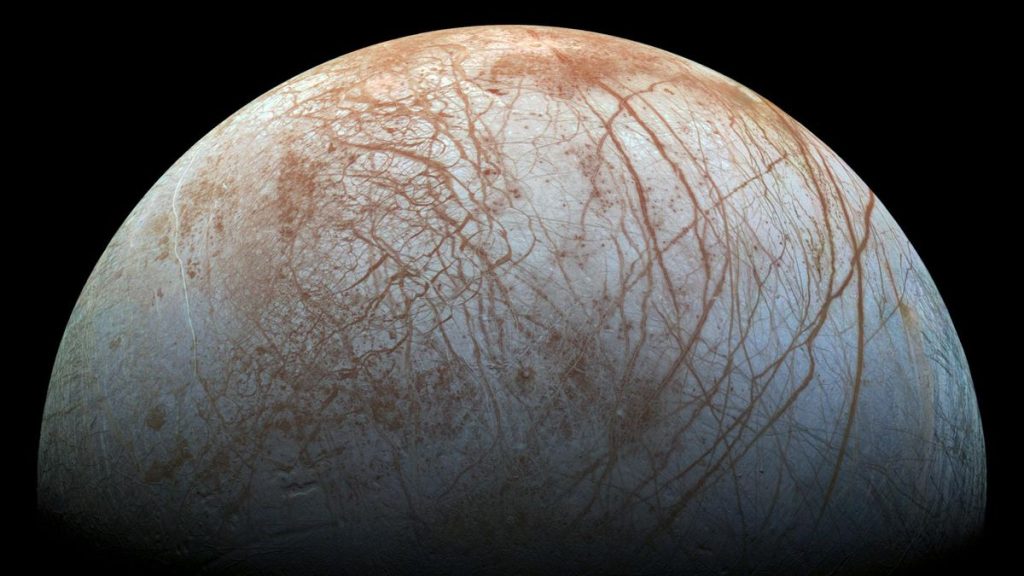
Explore Jupiter’s icy ocean moon Europa in NASA virtual tour (photos) (Image Credit: Space.com)
NASA’s Europa Clipper probe is finally on its way to the icy ocean moon of Jupiter, but it’s going to take some time to get there — about six years. Fortunately, we don’t have to wait that long to get close-up looks at Europa.
NASA recently updated Europa Trek, a web portal that gives users the ability to “fly over” the surface of Europa, with a guided tour showcasing and explaining some of the moon’s geological features. The map comprises images gathered by Europa Clipper‘s predecessors — Voyager 2, Galileo, and Juno, NASA spacecraft that performed flybys of the moon.
The guided tour walks you through the intriguing geological features of Europa, a moon with an icy crust over a massive ocean thought to have twice the volume of Earth’s oceans combined.
Immediately apparent as you fly over the surface are long, dark lines criss-crossing the moon; these are called linea. “One likely explanation for these features is that these are indeed cracks in Europa’s crust. Active cracks flex open and closed with the tidal flexing of Europa as it circles Jupiter,” NASA officials wrote on the Europa Trek tour.
Related: Europa Clipper: A complete guide to NASA’s astrobiology mission
Less apparent are impact craters. Interestingly, there are only a few on Europa’s surface. Planetary scientists estimate the age of a celestial body’s surface by the number of impact craters they sport; older surfaces have had more time to gather impacts.
“The lack of craters on Europa indicates that we are seeing a fresh, young surface on a geologically active world,” NASA officials wrote. Though Europa itself is thought to be around 4.5 billion years old, its surface is likely just 20 million to 180 million years old, constantly being renewed by geological activity.
To take the guided tour of Europa, visit trek.nasa.gov/europa, click on the “hamburger” icon on the top left of the screen, and select the “Landforms of Europa” option. You can, of course, explore the surface on your own, too.
And if you’d like to see more of our solar system, you’ll be glad to know that Europa Trek is just one of more than a dozen such treks exploring the celestial bodies here. Find the others at NASA’s Solar System Treks portal, including our own moon, the near-Earth asteroids Ryugu and Bennu, and Saturn’s moon Titan.





